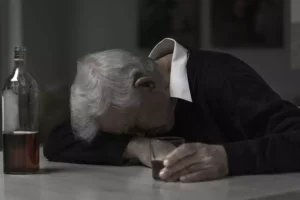The PTSD Checklist for DSM-5 (PCL-5; Exhibit 3.6) is an updated version of the widely used and researched PTSD Checklist (PCL), which was based on DSM-IV criteria. Not much research has yet been conducted on the use of the PCL-5 with older adults. The PCL-5 has been used to screen for PTSD in some studies of older veterans,413,414,415 but these studies were not designed to look at the validity of the PCL-5 in aging populations. Use screening and assessment tools that have been well researched and approved for use with older adults.
- Combined 2007 to 2014 NSDUH data indicate that, on an average day, 6.0 million older adults used alcohol (Figure 1).5 Older adults who used alcohol in the past month drank an average of 1.8 drinks per day on the days they drank.
- However, research on this is mixed, and the FDA has not approved e-cigarettes as a smoking cessation aid.
- In addition, ask about periods following treatment where clients were successful (e.g., what worked for them).
- Chapter 3 offers a wide range of information and strategies to help you screen, assess, and treat older clients for substance misuse.
Risk Factors for Substance Use Disorders Among Seniors

The Substance Abuse and Mental Health Services Administration (SAMHSA) is the agency within the U.S. Department of Health and Human Services that leads public health efforts to advance the behavioral health of the nation. SAMHSA’s mission is to reduce the impact of substance abuse and mental illness on America’s communities.
Substance Abuse and Addiction in Older Adults
In the end, this will help your clients increase their chances for recovery. This report did not provide comparable information on frequency of prescription drug misuse. The DAWN results are evidence that prescription drug misuse does result in high numbers of older adults visiting the ED. Further, the overall drug overdose death rate rose by 50% during the pandemic (Figure 4), but varied across states.
Screening for Co-Occurring Cognitive Disorders
Also, some community mental health centers may offer treatment based on a person’s ability to pay. It’s important to watch for signs and symptoms of depression or suicide. Don’t shy away from asking if a family member or friend is feeling depressed or suicidal. Asking if someone is having thoughts of suicide will not make them more likely to act on those thoughts. Your questions may help the person open up about how they’ve been feeling and encourage them to seek treatment. For some people, changes in the brain can affect mood and result in depression.
Guide to Substance Abuse in Older Adults: Risks, Warning Signs, and Treatments
Primary care providers, general internists, family medicine practitioners, trained pharmacists, advanced practice registered nurses, and physician assistants. Bupropion, varenicline, and nicotine replacement are options for nicotine dependence. If you’re worried about an older loved one’s use substance abuse in older adults of alcohol or drugs, talk to them about it. If that doesn’t work, consider asking their doctor, minister, or a longtime friend to approach them instead. Use of illegal drugs like cocaine and heroin (and marijuana, in some states) is much lower in people 50 and up than in younger people.
- Knowing why, how, and whom to screen for substance misuse and co-occurring mental or neurocognitive disorders will help you provide more complete care.
- NSDUH data indicate that older adults who used alcohol in the past month drank on an average of 11.1 days per month.
- The CDC’s Timed Up & Go is one of the easiest ways to assess a client’s fall risk.
Substance abuse overall may increase the risk of fractures secondary to recurrent falls, memory loss, sleep disturbances, anxiety, and depression. In this article, we will review the signs and symptoms, risk factors, screening tools, Diagnostic and Statistical Manual of Mental Disorders, Fifth Edition (DSM-5) diagnostic criteria, and challenges of treating substance abuse in the older adults. The delivery of mental health and substance use disorder services via telehealth grew sharply during the pandemic. By 2021, nearly 40% of all mental health and substance use disorder outpatient visits were delivered through telehealth. These behavioral health services via telehealth have also been more utilized in rural areas than urban areas during the pandemic.


